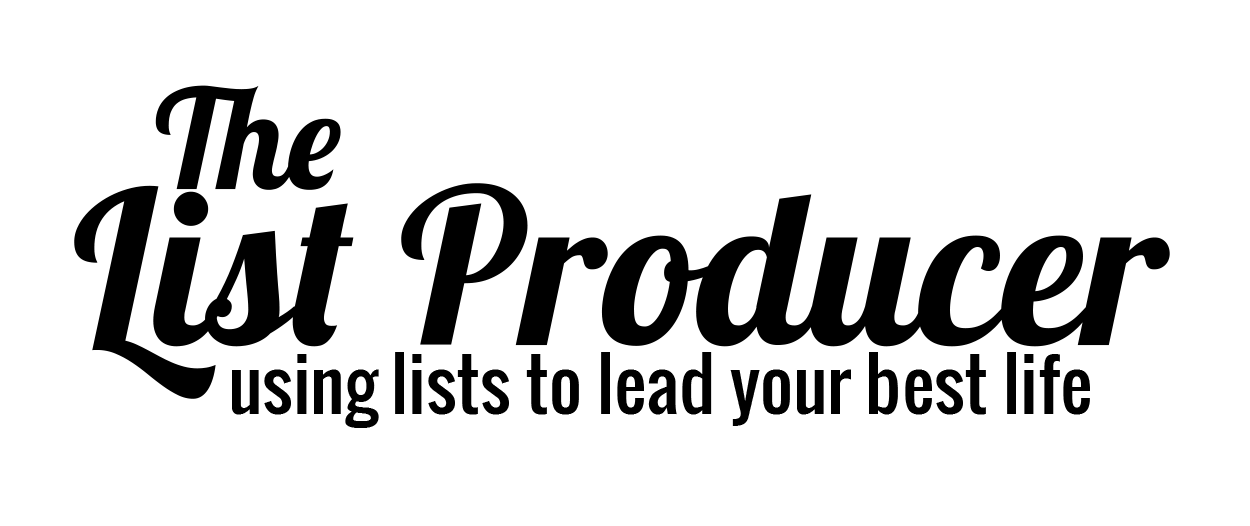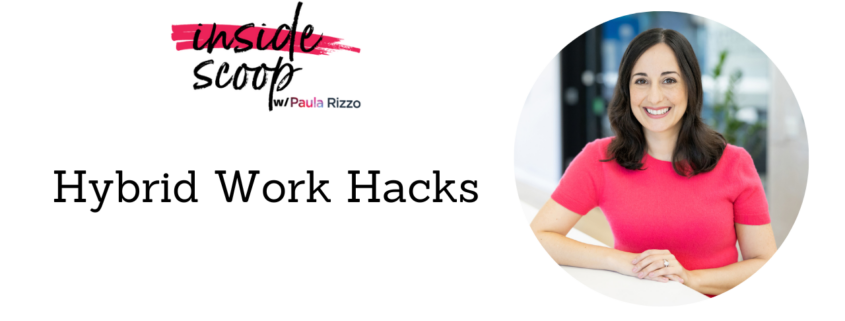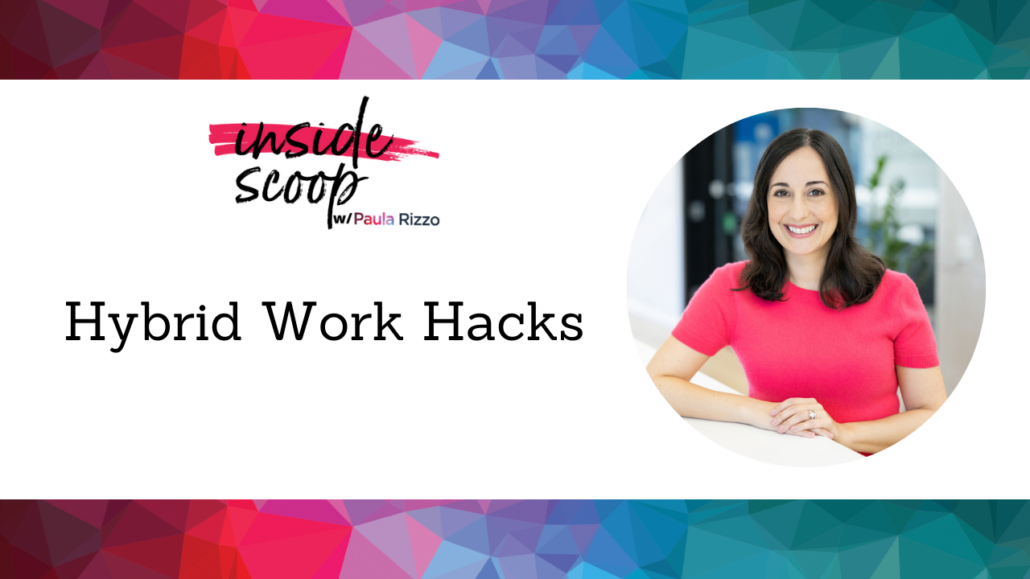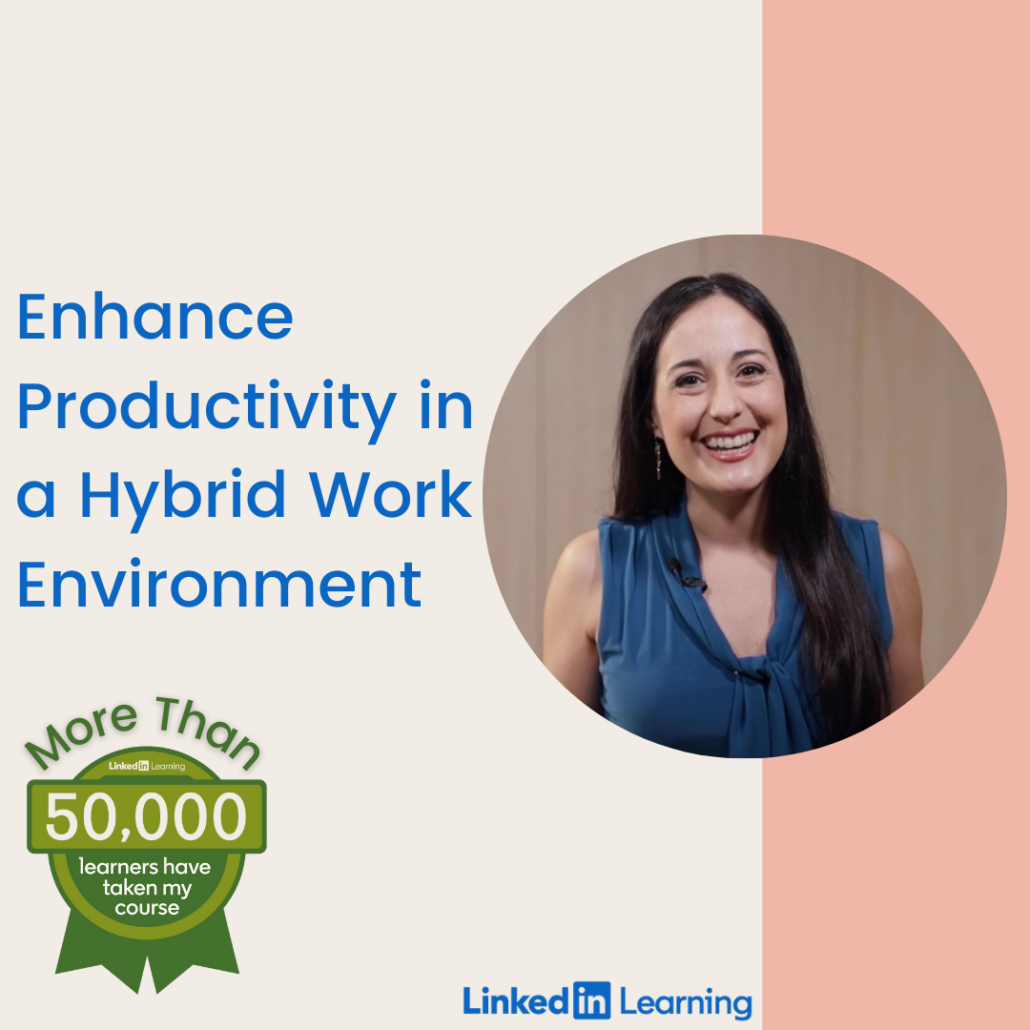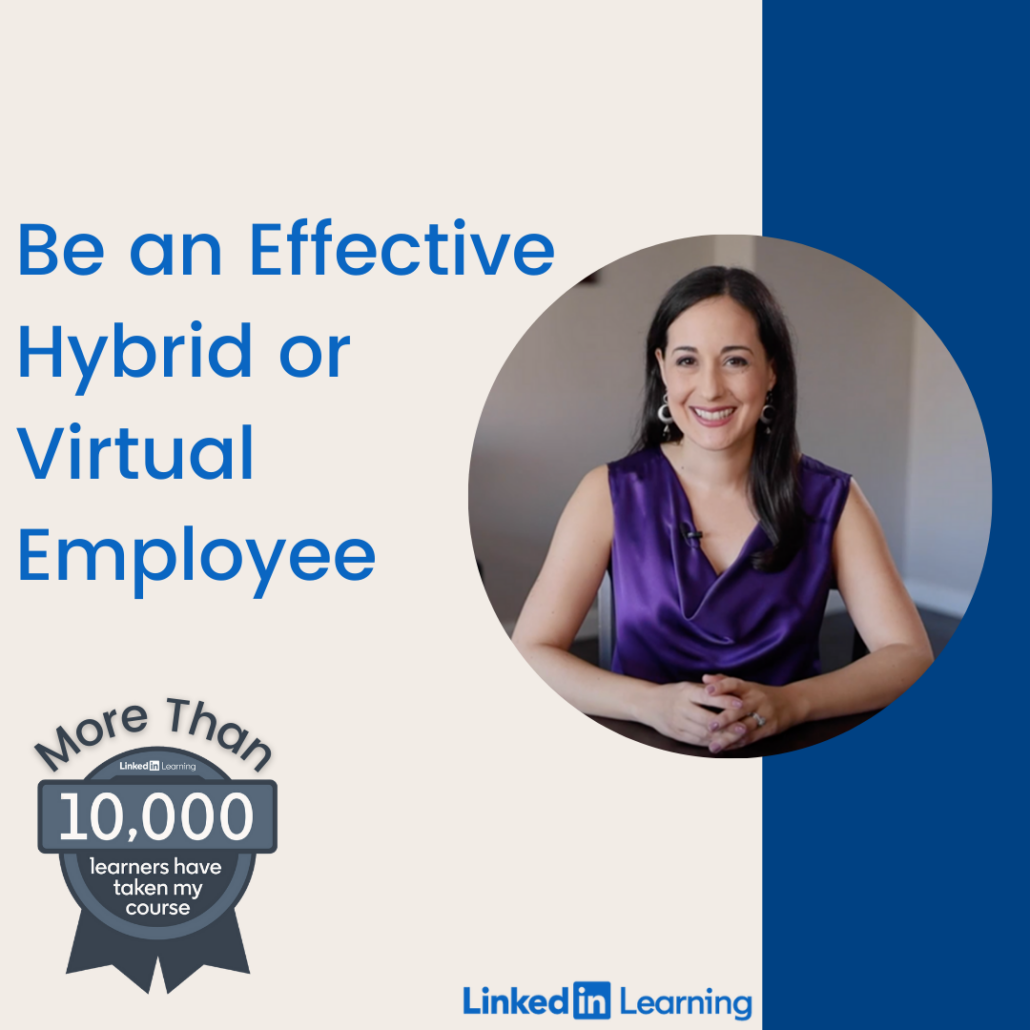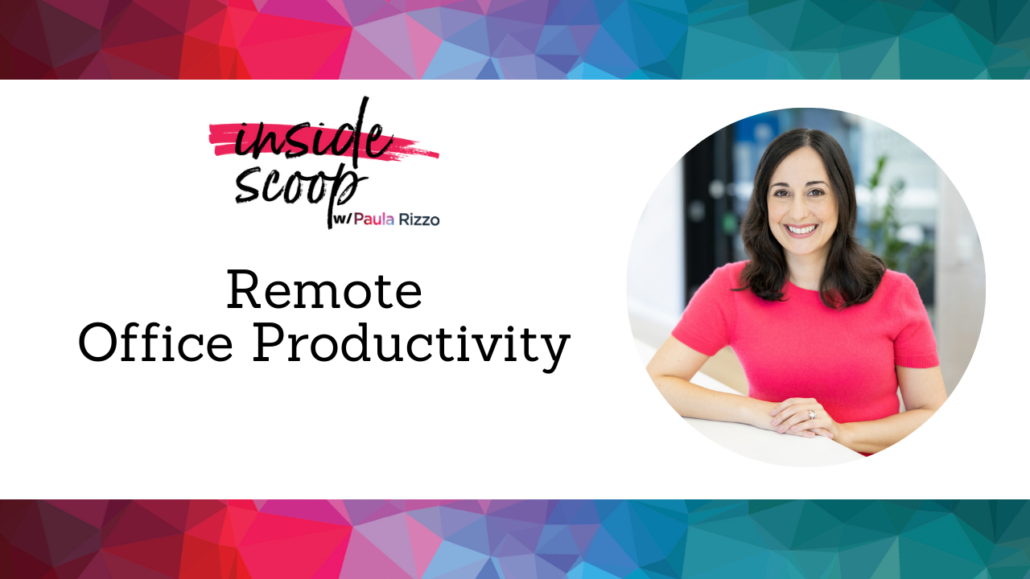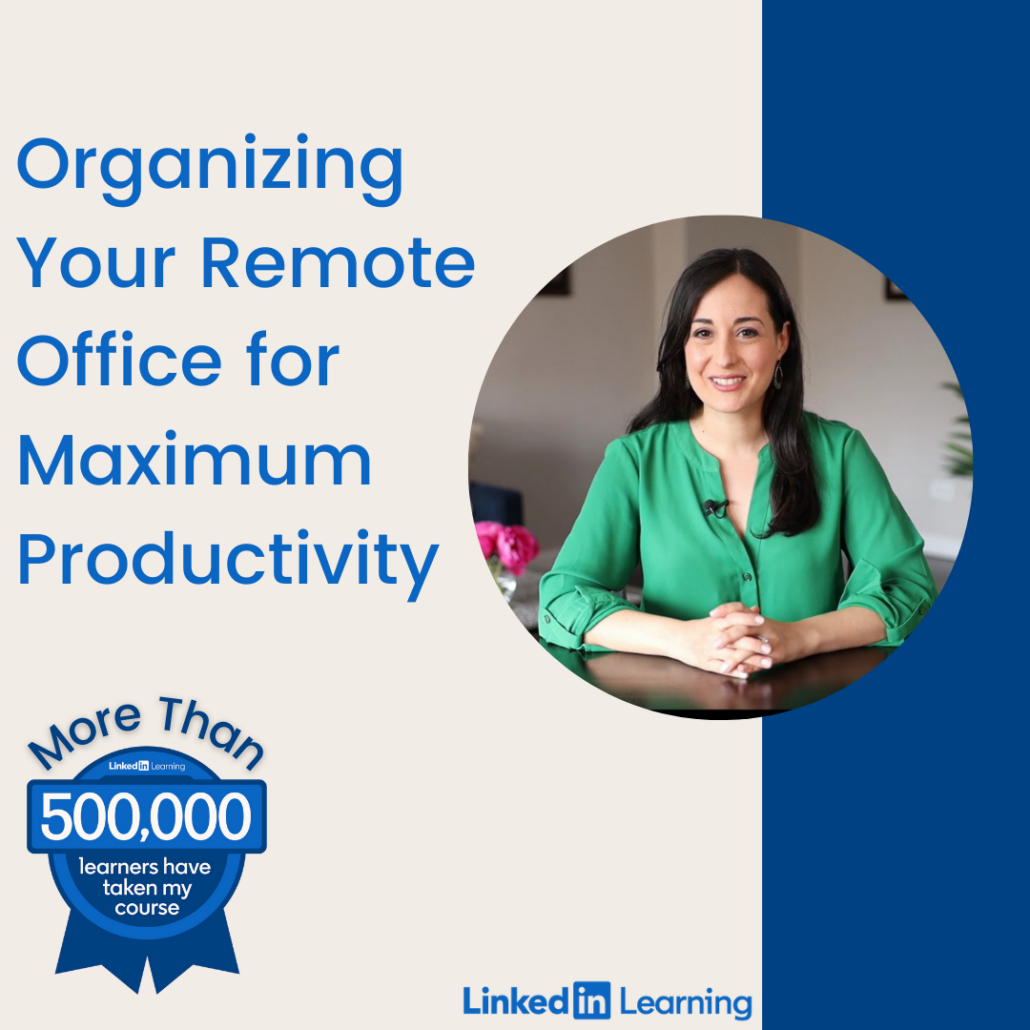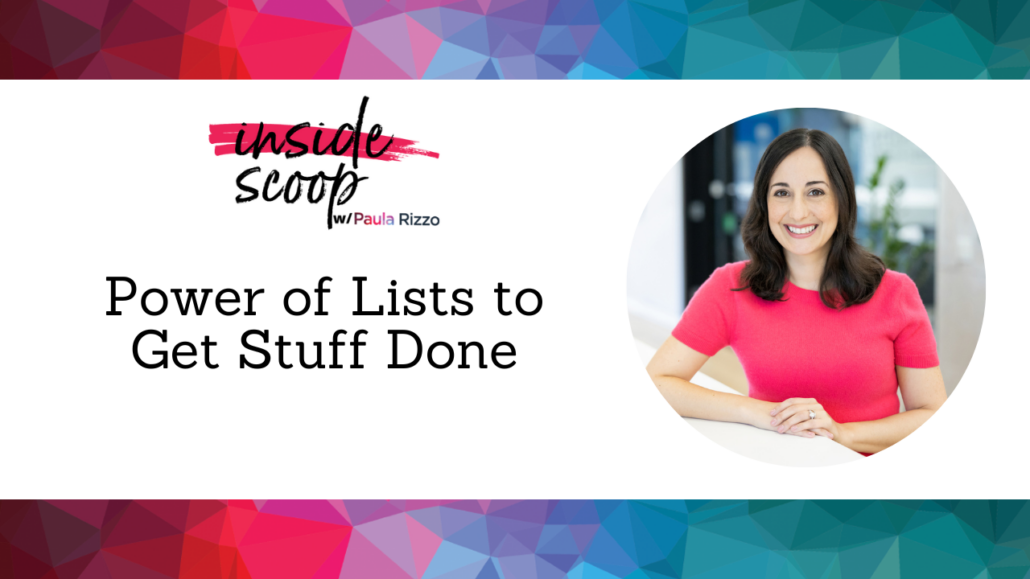Five Hacks for Enhanced Hybrid Productivity
___
BONUS FREEBIE: Want even more ways to stay organized, productive and less stressed? Click here to get access to my List-Making Starter Kit. It will boost your efficiency and get you back to doing more of the things you love.
___
Hybrid work is here to stay — like it or not! If you’re in a hybrid role, it’s important to know exactly how to set yourself up for success.
Hybrid work is unique because it’s not working in the office or working fully from home — it’s both, so it requires you to build your skills with in-person and remote productivity.
I created two LinkedIn Learning courses all about how to be strategic when planning for hybrid productivity (and fully remote work!).
I also gave a little preview of these courses in my live-stream show Inside Scoop.
The first course, Enhanced Productivity in a Hybrid Work Environment, is all about defining your productivity style and getting to know yourself, and the second, Be an Effective Hybrid or Virtual Employee, is about creating day-to-day plans that help you improve your effectiveness in these roles. They really work together!
Here are some of the tips I shared — a little taste of what you’ll learn in my new courses, Enhanced Productivity in a Hybrid Work Environment and Be an Effective Hybrid or Virtual Employee.
1.) Know yourself.
How do you work best? Get to know your productivity style. This is something I wrote all about in my book Listful Living. Here are some questions to get you started:
- Is morning when you do your best work? Or late at night?
- Does natural light help you feel ready to tackle your tasks? Or do you like having a cozy lamp on?
- What types of distractions cause the most disruption in your flow? How can you minimize these at home and in the office?
2.) Be flexible.
Being a hybrid employee means being flexible. Expecting to be in flux mode means you can build a toolbox to make your work happen wherever it needs to happen — and planning ahead so your space matches your task!
3.) Split your work intentionally.
Say you go into the office Mondays, Wednesdays, and Fridays, and you are work from home (WFH) on Tuesdays and Thursdays. That means you need to split up your tasks for the week in a way that matches the spaces you’re working each day.
Maybe you have a quiet space in the office but not at home, so you would save a task like writing for when the environment is suited to that work. Collaborative meetings via Zoom with people located around the country might be a better use of time for your WFH days. This is just an example! It might look different for you.
Think about the qualities of your home and in-office work spaces and then divide up your tasks according to what you need. Of course, this isn’t always completely possible, and that’s okay. Back to #2 — be flexible!
4.) Check in on your goals.
Making the big shift to hybrid work can be an opportunity to come back to basics and think about what your goals are. How can hybrid work give you an opportunity to get there? What do you need to give attention to in this new set-up? Again, being intentional will help you use hybrid work effectively in reaching your short- and long-term professional goals. For instance, do you want to make your voice heard in meetings? Well, you’ll need to adjust your strategies if your meetings are in person versus on Zoom. This is something I go into in depth in my course.
5.) Give yourself grace.
Transitioning to hybrid work can feel like you’re starting a new job, even if you’re not. It’s okay to feel the newness of this set-up. Give yourself grace and remind yourself of why you entered this field when you were just starting out. That mindset can get you far and really support your skill-building process.
If you’re a hybrid employee or employer, my two courses have a lot more actionable tips. You can access them — and my other LinkedIn courses — on my LinkedIn instructor page.
___
BONUS FREEBIE: Want even more ways to stay organized, productive and less stressed? Click here to get access to my List-Making Starter Kit. It will boost your efficiency and get you back to doing more of the things you love.
___
Five Remote Work Strategies for Intentional Productivity
___
BONUS FREEBIE: Want even more ways to stay organized, productive and less stressed? Click here to get access to my List-Making Starter Kit. It will boost your efficiency and get you back to doing more of the things you love.
___
I’ve been working remotely for six years now, so when the pandemic began, I felt ready to work from home and stay productive. I know that wasn’t the case for everyone.
Making the shift from an office to full-time remote work isn’t easy. There’s so many factors that influence productivity, and figuring out how to stay on top of things in a new set-up isn’t easy. So back at the beginning of the pandemic, I created a LinkedIn Learning course on this topic for people who were just thrown into WFH. It’s called Organizing Your Remote Office for Maximum Productivity.
I also recorded an episode of my LinkedIn Live show, Inside Scoop, about how to evaluate your remote work setup and make changes to improve your productivity.
Now that working from home is a permanent reality for so many of us, I want to challenge you to take stock of how it’s going for you. Consider these questions:
Are you as productive as you want to be?
Does your workspace help or hinder your productivity?
Are your digital systems organized in a way that supports your productivity?
Reflecting on these questions can help you locate where you may need to reconsider your strategies for productivity. Below are five ways you can become more intentional about your remote work productivity.
1.) Identify your productivity style.
How do you work best? This is something I wrote all about in my book Listful Living. Here are some questions to get you started:
- What time of day do you do your best thinking?
- What in your office sparks joy?
- What is the view from your desk?
- What kind of lighting makes you feel your best?
Whether it’s having a view of some green space or lighting a candle, making small shifts to your workspace can have big effects on your productivity. Think about working in an office with harsh overhead lighting and no windows. That can really diminish productivity because it saps your energy. I want to help you build the opposite in your home office. The goal is an intentional space that is inviting and supportive.
I use these tips myself. In my new home office, I needed to really consider where I should arrange my furniture. It took a few tries to get my desk into a spot that felt right!
2.) Create a video studio.
If you work remotely, your home office doubles as a video studio. You’re probably taking all kinds of video calls to conduct meetings and check in with your clients or colleagues. So take a moment to think about what kind of equipment and backdrop you need to appear professionally on those calls.
It’s important to up your game when it comes to virtual meetings — we’re way past the days when having your cat run around behind you was acceptable! Good video quality and audio quality, combined with a neat and professional backdrop, makes all the difference.
I shared some of my favorite equipment and video tips here. Remember, you don’t need to spend a lot on this all at once. Just think about what improvements are important to you and go.
3.) Set boundaries.
One of the biggest challenges for remote work is setting boundaries. Just because you aren’t clocking in and out of an office doesn’t mean you should be available 24/7!
It’s so important to set clear expectations with your colleagues and clients about when you will and won’t be available. This might look like an email signature sharing what hours and days you are reachable by email and phone, or automatic responses if someone gets in touch when you’re on vacation.
4.) Organize your digital life.
Remote work requires using a variety of communication platforms, from Zoom to Slack. Whether or not you have control over which of these platforms you use, you can always revisit the way you’re using them and take advantage of their features. For instance, do you use email folders? Do you send audio messages to colleagues?
It’s essential to think creatively about digital platforms and communication if you’re working remotely. Being organized is important because your colleagues might be spread out across the country or the world — they can’t just pop over to your desk to ask you where a file is located.
5.) Make an on-the-go strategy.
Working remotely doesn’t just mean working from home! You might be working from an Airbnb, a hotel, or the home of a family member. Having a checklist of items you need to bring to do your work from anywhere will save you so much time and trouble. This is something I go into in two of my LinkedIn Learning courses: Enhance Productivity in a Hybrid Work Environment and Be an Effective Hybrid or Virtual Employee.
You can watch the full episode of Inside Scoop for more strategies!
___
BONUS FREEBIE: Want even more ways to stay organized, productive and less stressed? Click here to get access to my List-Making Starter Kit. It will boost your efficiency and get you back to doing more of the things you love.
___
Four Lists to Get Stuff Done
BONUS FREEBIE: Want even more ways to stay organized, productive and less stressed? CLICK HERE to get access to my List-Making Starter Kit. It will boost your efficiency and get you back to doing more of the things you love.
I’ve been a list-maker for as long as I can remember. I really couldn’t live without them. I use them in every part of my life, from running my business to preparing for vacations.
Lists may seem simple, but taking a closer look and how, when, and why you write lists can have a huge impact on your productivity and organization. This is something I wrote about at length in my books, Listful Living and Listful Thinking.
I also created a LinkedIn Learning course on this topic: The Power of Lists to Get Stuff Done. I want to give you a little preview of that course so you can get started on leveraging the power of lists right now.
In this episode of Inside Scoop I walk you through a little preview of the full course.
Here are four lists that can change the way you work:
1.) The Goal List.
This is a powerful list for any area of your life, but it’s especially helpful in setting professional goals. And I don’t just mean things like “get promoted” or “write an email.” I suggest adding things like “finish the week without feeling overwhelmed.”
Writing a goal list at the beginning of each week gives you something to return to on Friday to reflect on how things went.
2.) The gratitude list.
The gratitude list is one of my favorites. It’s so important to take time to acknowledge the things we are grateful for. It can be a total mindset shift to start taking note of these, whether it’s getting to see a friend for lunch or finding a ripe mango at the grocery store.
Gratitude lists are an instant mood booster. Going through the process of writing these down can get you out of a funk when you feel like nothing is going your way. .
3.) The checklist.
A classic! Checklists are essential in so many professions. Everyone from pilots to surgeons makes checklists to make sure they have everything they need to do their job well. Lives depend on those checklists! I think that speaks volumes about how important this kind of list is.
Checklists are the right choice for tasks you need to do regularly. It can save time to create a checklist you return to rather than creating new to-do lists over and over again each time you need to do something.
4.) The timed to-do list.
To-do lists are probably the most common list out there. But I want to offer a twist that can boost the impact to-do lists have on your productivity: timing. Keeping track of how long things take you can allow you to create a to-do list that is organized by the length of time each task takes.
This is connected to your productivity style. If you know what time of day you have longer and shorter attention spans — and you know about how long each task on your to-do list takes — you can match up your tasks to your productive periods. Identifying your productivity style is something I go into in much more detail in my LinkedIn Learning course, The Power of Lists to Get Stuff Done. I also share about digital tools for list-making, managing stress around to-do lists, and much more.
You can watch the full course here.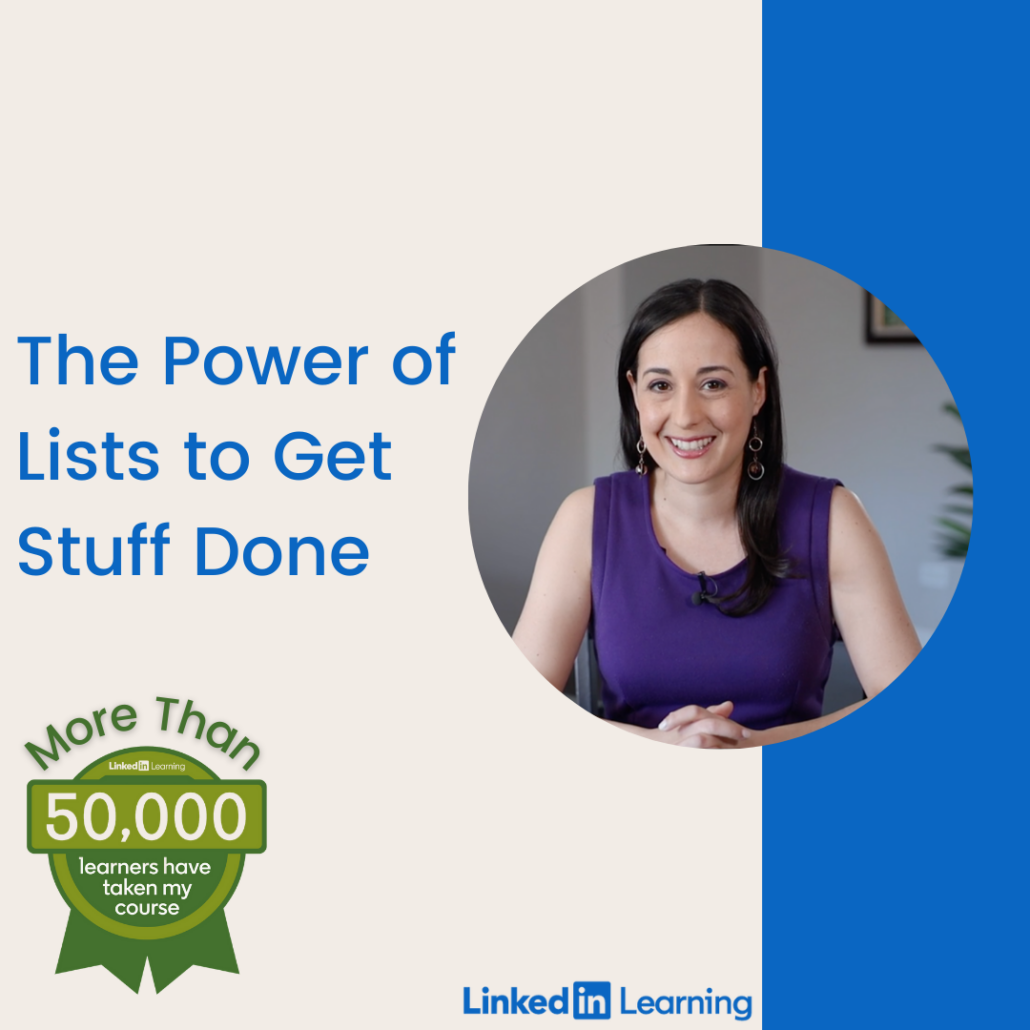
BONUS FREEBIE: Want even more ways to stay organized, productive and less stressed? CLICK HERE to get access to my List-Making Starter Kit. It will boost your efficiency and get you back to doing more of the things you love.

